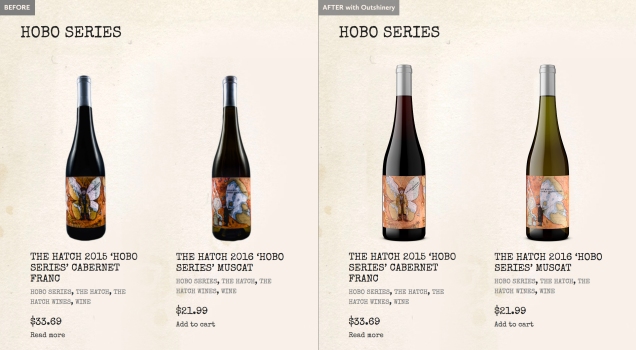I have to admit, somewhere along this wine journey of mine, wine labels have become a bit like white noise once I pop the bottle. Sure, I’ll snap a pic for Instagram or Delectable, but I’ve been more concerned with what’s inside the bottle. But a few things over the summer reminded me that these labels deserve a significant pause—if not for the time spent in creating and marketing them, but for the joy of discovery they help to impart.
The first is a fascinating innovation that’s changing the way those in the bottle business can market their wares, but the second is a bit of whimsical happenstance, so I’ll start there.
Labels Invoke an Artistic Past
If you follow me on Instagram, you may have noticed I’ve recently moved from Washington, D.C. to Boston where I’m soon learning that there’s a fascinating and evolving wine culture up here. (Which also explains why I haven’t written in this blog since February —so my apologies for the delay). That also means, that when I’m not exploring wine, or focused on my day job (which thankfully still lets me write about wine), I’m exploring my new home state. Recently, that led me to the beautiful Isabella Stewart Gardener Museum, famous for an unsolved art heist in the 1990s. On my way out of the museum, a room caught my eye: It was empty except for a stunning work of a woman dancing across the horizontal canvas. I couldn’t stop looking at it. And after taking a few iPhone pics, decided I should continue on my way.
Later that evening, after posting about my adventure on Instagram, a fellow wine-lover I follow commented that the piece of artwork was the label of an Edmunds St. John bottle. (If you don’t know ESJ, please read this great Esther Mobley profile and seek out his wines). Lo and behold, and not even 10 seconds later, I was able to pull the bottle out of my own wine cellar. Had I seen this artwork before? Of course, but I remembered the bottle for its producer, not its label.

It’s a funny coincidence, and one I like to think the universe may have played a part in because honestly, the only artwork I snapped pictures of were of a missing Rembrandt and this John Singer Sanger’s El Jaleo painted in 1882. But more importantly, it’s a nice tap on the shoulder to keep paying attention to the label. In this case, it’s illustrating ESJ’s first Spanish blend.
Label Innovations
However, if you’re in the wine business and trying to introduce yourself to the vast majority of the wine-drinking public, your label is everything. You’re probably shaking your head and dismissing my white noise comment above. But I agree, to discount the creativity and purposefulness that goes into labels is foolish. My first realization came after discovering a coffee-table book called 99 Bottles of Wine on the giveaway pile when I worked at NPR. The book showcases the bottles designed by CF Napa Brand Design. But next to each photograph is a page-long description of how the label was conceived.
So, when I was asked to write a marketing story for SevenFifty Daily on how to take the perfect bottle shot, the importance of the label came back into focus. While much of the story discusses hiring a professional, the lighting and consistency of your photographs, one bit of ingenious trickery caught me off guard.
It’s a company called Outshinery and it was founded by Laurie Millotte, a Burgundy-born graphic designer who moved to Vancouver so she could see the Pacific Ocean (I may need to reevaluate how I choose to move in the future, especially as cooler weather and gray skies are starting to arrive here in Boston). After designing wine labels and realizing the difficulty in getting quality brand assets for her clients to sell their wares, she knew there had to be a better way—especially one that would allow her to work with clients all over the world and not be tied down to waiting for shipments of wine to cross international borders). And while watching one of the Jurassic Park movies, she had her “aha” moment: Why not use the magic of Hollywood and apply it to the alcohol business. If technology can make a dinosaur interact with the people and the rest of the physical world around us, why can’t there be a way to do the same with bottles, she told me.
And that’s what Outshinery does. Using 3-D technology, CGI (computer-generated images), and a dash of scientific calculations, she’s created a virtual studio that can create and then photograph a virtual bottle from any direction. Not only do the finished products look incredibly true to life (“It still looks real,” she assured me. “It’s just executed by a computer.”), but she can animate them for fun social media campaigns like this Mikkeller Brewers Instagram.
Wineries (or breweries) can even have their images printed long before the bottles come off the production line. As long as the winery has a digital version of the label available and knows which shape and color bottle they’re using, the images can be created—either against a white background that can be used on a tech sheet, or placed in a real photograph for lifestyle images.

For the wine industry, which likes to harken back to its history, it’s fun to see new technology easing some of the business responsibilities and the fascinating innovations coming from creative people like Laurie Millotte.
Laurie recently hosted a webinar for 150 wineries to discuss the importance of getting the right images and how her business can help. Lucky for us, she’s posted it online, which you can watch here.
Labeling wines are fun and exciting but at the same time, you should consider its impact on the consumers. I love your choices when it comes to your wine labels. They look awesome.
LikeLike